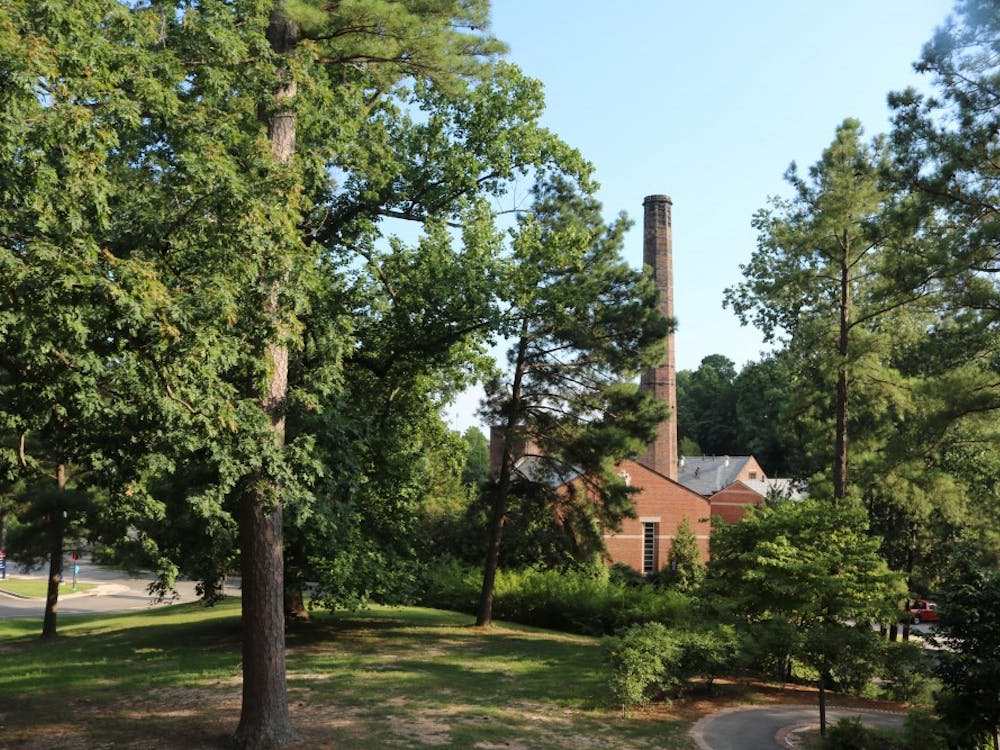Imagine downtown Richmond with cobblestone roads, trees, retail shops, a trolley system and two-way streets.
That's the goal of the city's department of community development, and it's a part of the new downtown Richmond master plan.
A community meeting was held Sept. 27 to show citizens the status of the plan and the changes made because of community feedback from previous meetings. The series of community meetings about the downtown master plan began in July. Rachel Flynn, director of Community Development, spoke to the crowd of about 400 residents at the meeting Thursday. She applauded the number of people who showed up and said it showed Richmond citizens care about the city.
"We shape our cities," she said, "and then our cities shape us."
Victor Dover, of Dover, Kohl and Partners, a firm specializing in town planning, spoke about his firm's progress on the plan. With each projected view of the plans for the city onto the large screen, Dover wrote "DRAFT" across it in big letters.
"The word 'draft' is probably the most important thing to see," he said, drawing laughs from the crowd. He stressed that the project was a collaborative effort between the city government, the citizens and the planning firm.
During the course of the presentation, Dover and his colleagues reviewed the six main focuses of the downtown plan: creating the traditional city, emphasizing the river, restoring the urban architecture, cultivating variety and choice, focusing on green initiatives and preserving the city's history. Of these six points, one of the most talked about was the James River. Dover called the river Richmond's "great, wet Central Park," and he showed plans to create more accessibility and integrate it with the downtown area.
When discussing the urban architecture, Dover recommended looking to Richmond's historic buildings for inspiration.
"Copy the best lessons from your past and refuse to copy the failures," he said.
Dover also said to become a truly modern city, Richmond must adapt and look to green initiatives and energy sustainability as part of the future.
One of the most popular proposed changes was changing downtown's one-way streets into two-way streets. Surveys were also passed around to ensure the information in the plans reflected the desires of the community.
After the presentation, a question and answer session was held. City residents asked about everything, ranging from creating spaces for electric cars and bicycle paths to accommodating Richmond's emerging arts and music scenes.
Enjoy what you're reading?
Signup for our newsletter
In order to receive even more feedback from the community, one room had maps of all the drafts with architects standing nearby to answer questions and listen to comments. Another room held more maps, but with pencils and paper on the tables so attendees could draw their ideas out for the planners.
Community planner Brooke Hardin said the department was looking for involvement from the citizens and used many outlets, such as the Internet, to encourage participation. Copies of the plans and projected before and after imagery can be found on the city of Richmond's Web site.
Although there was no direct mention of the University of Richmond community in relation to the master plan, Flynn said young people as a whole were factored in. She said the planners asked themselves what they could do to make students want to stay in the area after graduation. She said keeping the city affordable and encouraging a fun urban environment for "the 20-somethings" were priorities in the master plan.
Hardin agreed.
"If you're a student and you want to live downtown, you're going to be able to find something that you can afford," he said.
Senior Alex Weisheit did not attend the community meeting, but agreed that downtown Richmond needed some changes. He especially liked the ideas of creating a fun urban environment and improving the roads to make the streets two-way.
"I think it would make things a lot easier as far as going downtown to get to clubs and everything," he said.
Flynn said these plans could be sent to the planning commission as early as November and then potentially approved by the city council by December. She said things are looking good, and the smaller projects, such as planting trees in the downtown could be the first signs that the plan is being enacted. There is no projected budget, but Flynn said money was not an issue.
"It's not about the money, it's about having a vision," she said. "Do we want to be a great city or not? There's always enough money - this is America. America has money."
There will be more community meetings for residents to attend and see the progress that is being made to the plans.
Hardin said these meetings are an important part of the democratic process and encouraged students to be involved.
"Everybody's voice is heard, even if you're a part-time resident of Richmond," he said. "Get out and participate"
Support independent student media
You can make a tax-deductible donation by clicking the button below, which takes you to our secure PayPal account. The page is set up to receive contributions in whatever amount you designate. We look forward to using the money we raise to further our mission of providing honest and accurate information to students, faculty, staff, alumni and others in the general public.
Donate Now


